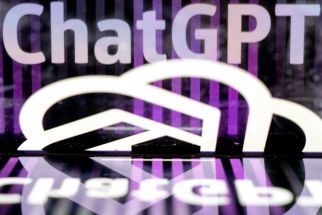CTIA Wireless 2006
April 17, 2006 | 12:00am
I was fortunate enough to attend the most important mobile phone event of the year last February, the 3GSM World Congress, in Barcelona. It was, indeed, a treat that I intend to repeat next year. Another huge global technology affair, the CTIA Wireless 2006, just concluded last week where my partner Dennis had the opportunity of attending. The CTIA is the premier wireless show that brought together the wireless, mobile computing and wireless Internet industries under the roof of the Las Vegas Convention Center. Over 50,000 guests from 90 countries attended it.
Similar to the 3GSM World Congress, the halls of the convention center were filled with various wireless exhibitors totaling almost 1,000. World-renowned handset manufacturers like Nokia, Motorola, Qualcomm and such had their usual humungous booths. Network manufacturers like Cisco, Nortel and Lucent had equally impressive displays. Not to be left out were Microsoft, RIM and other wireless-centric companies such as mBlox, SMS.ac, MobiTv, PayPal, Wi-Fi Alliance, Yahoo and MTV. Indeed, the three-day event succeeded in bringing together all industries affected by wireless technology.
As related to me by my partner, the event had a couple of hot topics. One was the impact of the growing number of mobile virtual network operators (MVNOs), which included Disney Mobile and Mobile ESPN, which launched their services during the show. As you very well know, an MVNO utilizes an existing network infrastructure by leasing network capacity and reselling their content and services to a specific targeted segment. Take, for example, the business case of Disney, the universal family entertainment brand. Disney intends to leverage its brand to access the next big driver of growth in the cellphone industry: children aged 10 to 14 who represent a mere 20 percent mobile penetration as compared to the whole US population of 70 percent. The family then could definitely be a meaningful market for mobile operators where parents can provide their kids with cellphones for emergencies and yet be able to personalize their kids’ phones with limits and restrictions. The Disney Mobile phone service will allow parents to share their airtime and SMS credits with their kids, along with lower access rates that come under the parents’ plan. To top it off, Disney even launched its own mobile phone in cooperation with LG. These handsets are kid-centric, carrying features like real-time data on when the phone was used and which numbers were called and a function to locate kids via GPS. Obviously, the handsets also feature access to Disney content through a Disney-designed interface. As the mobile market matures, it is going to be more apparent that the changing environment dominated by voice is shifting to one where mobile data services are beginning to be of equal importance. Are we going to see the same MVNO strategy from Solar Sports or El Shaddai soon?
As in the 3GSM, another hot topic was the issue of where mobile networks would go from here. As networks are now flooded with higher volumes of branded interactive content, subscribers demand faster download speeds. After billions of US dollars have been spent, today’s 3G networks can only transmit between 400 and 700kbps per user – not enough to replace wired broadband connections. There are several technologies to choose from when it comes to supercharging the network. Will it be WiMax, designed to provide greater coverage than Wi-Fi wireless service? Or will it be the next generation of cellular technology like UMTS-HSDPA (Universal Mobile Telephone System-High Speed Downlink Packet Access)? Then there are the mobile broadcast technologies being developed by the subsidiaries of Qualcomm and Crown Castle, which create separate "overlay" networks for delivering live TV. This has left me even more confused. Hey, let’s leave that dilemma then to the operators to decide on.
Every year at the CTIA, the best of four product categories and the best in show are announced as part of the CTIA Wireless Emerging Technology Awards. Scanning the list at first, I was baffled at some of this year’s winners. Most of them I would not even bother to use even if they were given to me. Anyway, here are the winners of the show so you may pass your own judgments:
• Best in Show: Samsung SGH-T509. This is a slim, candy bar-designed (0.4 inch thick) phone with a 65,000-color display, Bluetooth, VGA camera, instant messaging, Java (J2ME), WAP 2.0 wireless Web browser, and basic PIM applications, and can operate on GSM 850/1800/1900.
• Best Mobile Phone: Motorola Slvr L7. A mobile phone with an attractive overall design which comes with an integrated iTunes player, Bluetooth, a sharp display, and a TransFlash card slot.
•Best Smartphone/PDA: Palm Treo 700w. A smartphone similar to its predecessor, the 650, but is now operating on the Windows Mobile 5.0 platform.
• Best Mobile Accessory: Jabra JX10. A tiny and lightweight Bluetooth headset of stylish design.
• Best Wearable Wireless Device or Fashion Technology: Plantronics Discovery 645 Bluetooth headset. This is the lightest headset in the market and uses DSP technology to actively reduce background noise for crystal-clear calls.
Patrick R. Garcia is the managing director of Bidshot Wireless Services. For comments or suggestions, e-mail [email protected]
Similar to the 3GSM World Congress, the halls of the convention center were filled with various wireless exhibitors totaling almost 1,000. World-renowned handset manufacturers like Nokia, Motorola, Qualcomm and such had their usual humungous booths. Network manufacturers like Cisco, Nortel and Lucent had equally impressive displays. Not to be left out were Microsoft, RIM and other wireless-centric companies such as mBlox, SMS.ac, MobiTv, PayPal, Wi-Fi Alliance, Yahoo and MTV. Indeed, the three-day event succeeded in bringing together all industries affected by wireless technology.
As related to me by my partner, the event had a couple of hot topics. One was the impact of the growing number of mobile virtual network operators (MVNOs), which included Disney Mobile and Mobile ESPN, which launched their services during the show. As you very well know, an MVNO utilizes an existing network infrastructure by leasing network capacity and reselling their content and services to a specific targeted segment. Take, for example, the business case of Disney, the universal family entertainment brand. Disney intends to leverage its brand to access the next big driver of growth in the cellphone industry: children aged 10 to 14 who represent a mere 20 percent mobile penetration as compared to the whole US population of 70 percent. The family then could definitely be a meaningful market for mobile operators where parents can provide their kids with cellphones for emergencies and yet be able to personalize their kids’ phones with limits and restrictions. The Disney Mobile phone service will allow parents to share their airtime and SMS credits with their kids, along with lower access rates that come under the parents’ plan. To top it off, Disney even launched its own mobile phone in cooperation with LG. These handsets are kid-centric, carrying features like real-time data on when the phone was used and which numbers were called and a function to locate kids via GPS. Obviously, the handsets also feature access to Disney content through a Disney-designed interface. As the mobile market matures, it is going to be more apparent that the changing environment dominated by voice is shifting to one where mobile data services are beginning to be of equal importance. Are we going to see the same MVNO strategy from Solar Sports or El Shaddai soon?
As in the 3GSM, another hot topic was the issue of where mobile networks would go from here. As networks are now flooded with higher volumes of branded interactive content, subscribers demand faster download speeds. After billions of US dollars have been spent, today’s 3G networks can only transmit between 400 and 700kbps per user – not enough to replace wired broadband connections. There are several technologies to choose from when it comes to supercharging the network. Will it be WiMax, designed to provide greater coverage than Wi-Fi wireless service? Or will it be the next generation of cellular technology like UMTS-HSDPA (Universal Mobile Telephone System-High Speed Downlink Packet Access)? Then there are the mobile broadcast technologies being developed by the subsidiaries of Qualcomm and Crown Castle, which create separate "overlay" networks for delivering live TV. This has left me even more confused. Hey, let’s leave that dilemma then to the operators to decide on.
Every year at the CTIA, the best of four product categories and the best in show are announced as part of the CTIA Wireless Emerging Technology Awards. Scanning the list at first, I was baffled at some of this year’s winners. Most of them I would not even bother to use even if they were given to me. Anyway, here are the winners of the show so you may pass your own judgments:
• Best in Show: Samsung SGH-T509. This is a slim, candy bar-designed (0.4 inch thick) phone with a 65,000-color display, Bluetooth, VGA camera, instant messaging, Java (J2ME), WAP 2.0 wireless Web browser, and basic PIM applications, and can operate on GSM 850/1800/1900.
• Best Mobile Phone: Motorola Slvr L7. A mobile phone with an attractive overall design which comes with an integrated iTunes player, Bluetooth, a sharp display, and a TransFlash card slot.
•Best Smartphone/PDA: Palm Treo 700w. A smartphone similar to its predecessor, the 650, but is now operating on the Windows Mobile 5.0 platform.
• Best Mobile Accessory: Jabra JX10. A tiny and lightweight Bluetooth headset of stylish design.
• Best Wearable Wireless Device or Fashion Technology: Plantronics Discovery 645 Bluetooth headset. This is the lightest headset in the market and uses DSP technology to actively reduce background noise for crystal-clear calls.
BrandSpace Articles
<
>
- Latest
Latest
Latest
April 25, 2024 - 5:56pm
April 25, 2024 - 5:56pm
April 24, 2024 - 1:00pm
April 24, 2024 - 1:00pm
April 24, 2024 - 12:00am
April 24, 2024 - 12:00am
April 21, 2024 - 10:23am
April 21, 2024 - 10:23am
Recommended






























